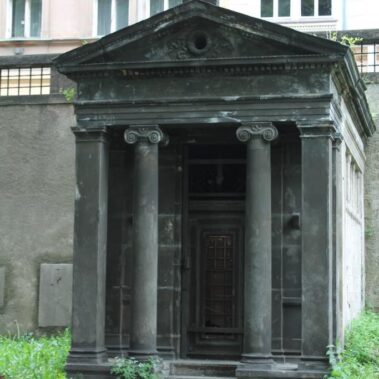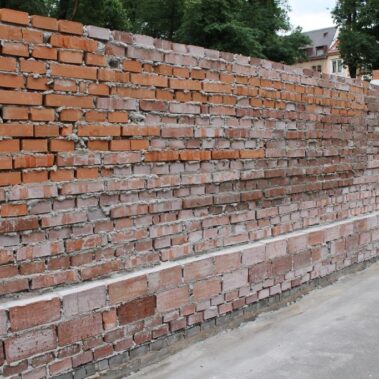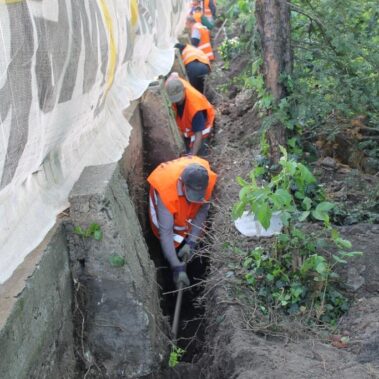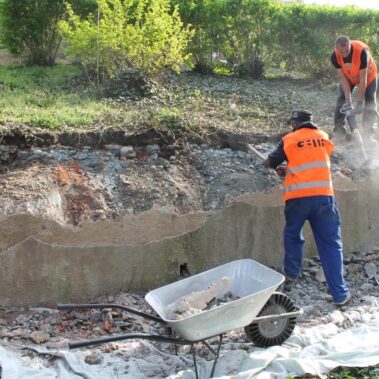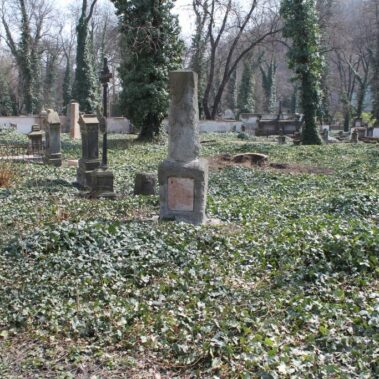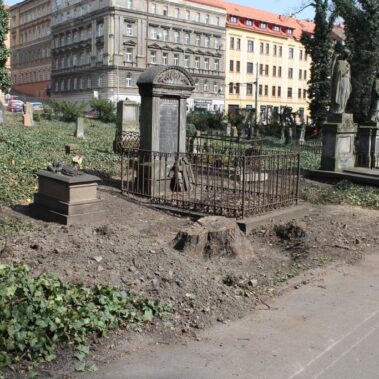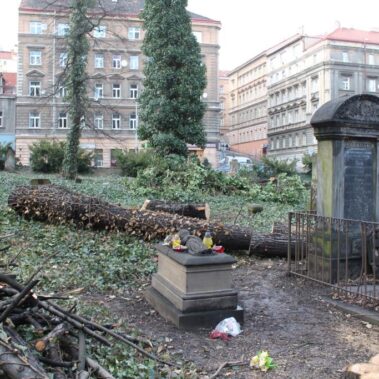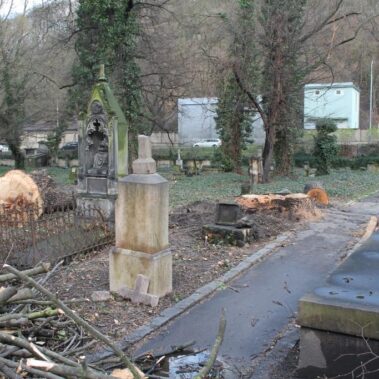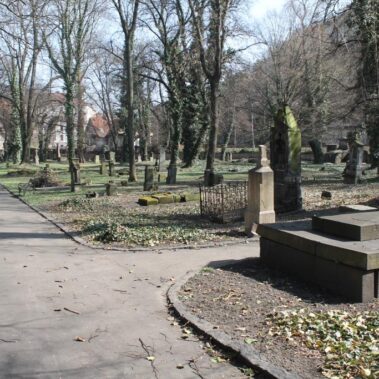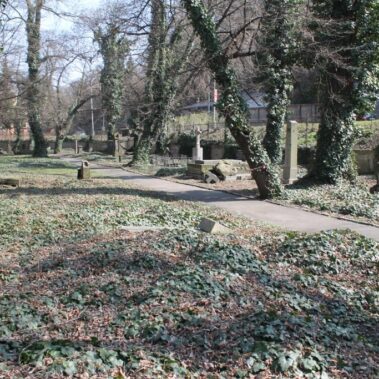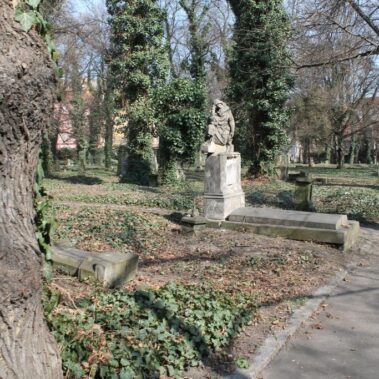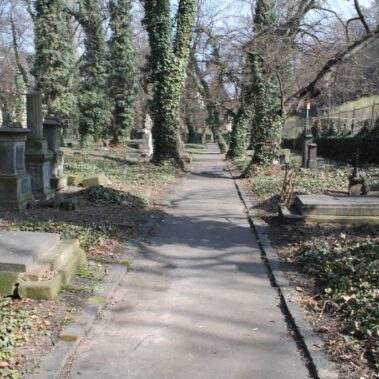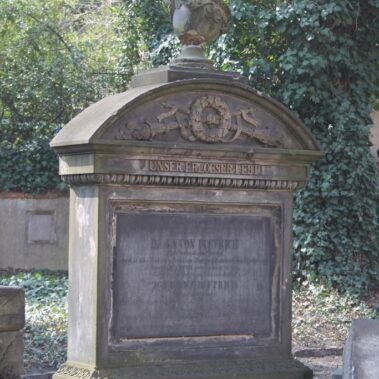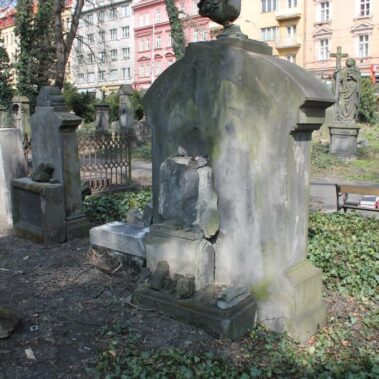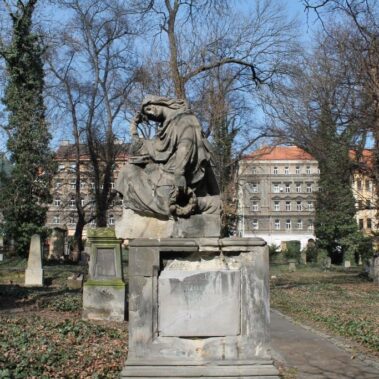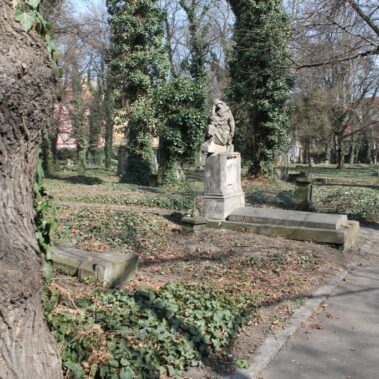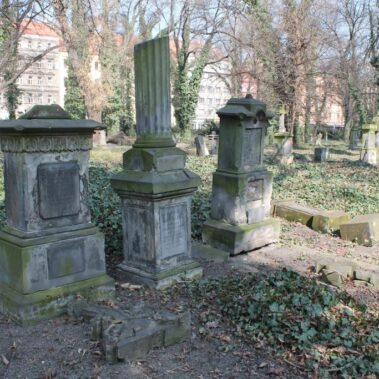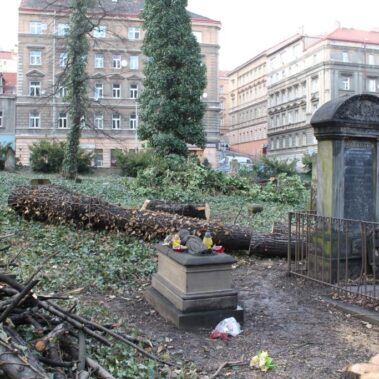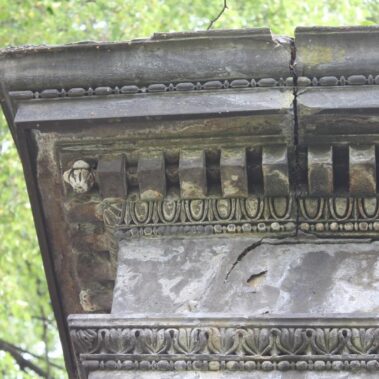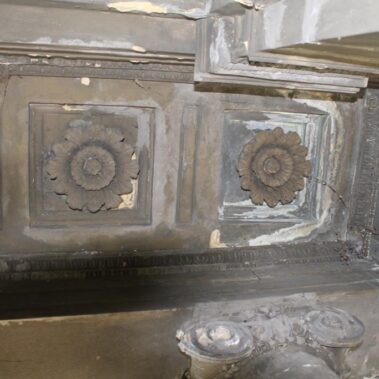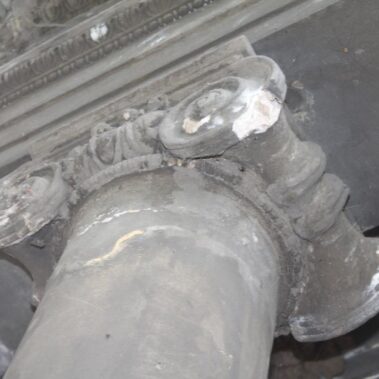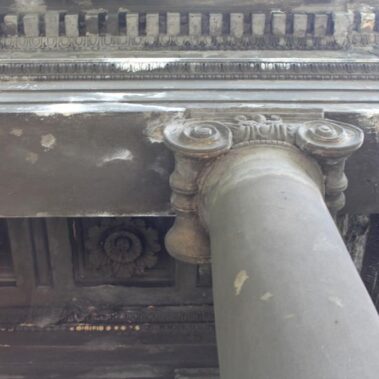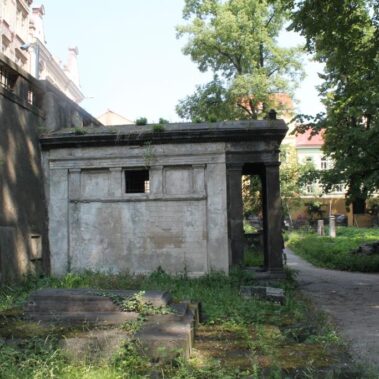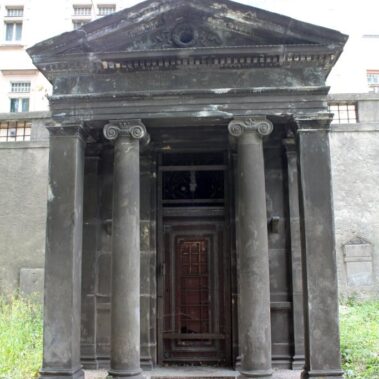Prague’s Malá Strana cemetery – site restoration

| Address: | Plzeňská Street, Prague 5 |
|---|---|
| Description of work: | Construction work (new entrance, stone wall) Restoration and conservation of the historic gravestone Installation of a camera surveillance system |
| Investor: | The Administration of the Prague Cemeteries |
| Contractor: | GEMA ART GROUP a.s. |
| Implementation: | 03/2015- 2016 |
The year of 1680 was rather unfortunate for Prague, as it was the year when the city was hit by a vast plague epidemic brought there from Vienna. It killed about twelve thousand people. As the plague was very contagious, it was quite usual to set up newcemeteries for the plague victims; one of them was established in then uninhabited part of Smíchov. At the same time, a plague hospital was established near the cemetery, where the infected were taken care of by Jesuits, who then also succumbed to the disease. The local cemetery was used as a plague cemetery during the last plague outbreak in 1713 – 1714 as well.
After the plague subsided, the original chapel was torn down and a new one was built and dedicated to the Holy Trinity. The sanctuary was rebuilt in 1724, with the contribution of Baroque architect Kilián Ignác Dienzenhofer.
The cemetery was turned into a town cemetery in 1786, officially established as the final resting place of people of Malá Strana, Hradčany and Smíchov. The capacity of the chapel was soon exceeded and there was a need to build a church. Its construction was significantly supported by the bishop of Passau who later settled in Prague – Leopold Thun-Hohenstein (1748 – 1826). However, he did not live to see the completion of the church, as it was built between 1831 and 1837. In 1862, the cemetery was extended to the west, taking over a former orchard.
Since more and more town residences were built around the cemetery, and burials in the middle of towns was forbidden, it was decided that the Malá strana cemetery would be closed down. The last funeral was performed in December of 1884. In the following years, the cemetery was falling into disrepair and there were talks about its liquidation. Fortunately, these intentions were abandoned after and thanks to many protests supported by people like Jakub Arbes, Alois Jirásek and Max Švabinský. Despite these efforts, part of the cemetery was still removed in 1927 and 1950 for the sake of extending the Plzeňská Street. In 1958 the cemetery was declared a cultural heritage site.
The most well-known and valuable monuments of the cemetery are the tomb with the statue of Leopold Thun-Hohenstein on his knees, the Haas family tomb or the gravestone of “the holy girl”. The three-year-old Anna Degenová (1848-1851) is surrounded by many stories: The daughter of a police officer Augustin Degen and a labourer Anna Degenová lived with her parents in a poor home at the then Újezdská brána (at the location of today’s Karmelitánská street). The girl was extraordinarily good-natured, and wanted to help every beggar and to share every last bit of bread; she longed to help the sick. She was loved by children and adults alike for her good nature, and even favoured by the count himself. One day, the girl was playing at home by the window, when she accidentally dropped a toy. Anička leaned out of the window and fell out of it, dying immediately from the fall. After the little girl’s death, people started spreading a legend about a restless angel who was by mistake incarnated as an unborn child and was trapped on earth. But for the ingenuous soul of an angel, life among people was too much of a burden, and so God decided to rescue the angel and take her back to heaven…
Little Anička’s gravestone is very impressive. The girl is lying and smiling, with her arms folded on her chest, dressed in a long shroud, with a pillow with decorative tassels under her head. The story inspired the writer František Kožík to write a fairy tale called The Holy Girl.
(source: www.malostranskyhrbitov.cz)
GEMA ART GROUP a.s. is the main contractor.The restoration includes new entrance with a staircase and a ramp serving people with disabilities, as well as a discreet toilet facilities that have also been built at the entrance. New cemetery stone wall has been built. In order to give the cemetery its historical character, the tarmac pavements were removed and replaced by more suitable gravel paths. The greenery was revitalised as well – both grass and new trees were planted. To ensure security at the cemetery, a camera surveillance system and a more suitable lighting system have been installed. The restoration and rescue of some of the valuable historic gravestones was a separate chapter of the renewal. The works were finished in the autumn of 2015.
Historic gravestones:
As part of the project of the restoration of Malá strana cemetery, GEMA ART GROUP a.s. has conducted restoration surveys and documentation. Based on the survey, six valuable gravestones were selected in July 2015 due to their urgent need of restoration.
The gravestones were severely damaged and the stone was weathering down and decaying due to algae, mosses, and fungi; crusts were forming on the surface. The gravestones are made of limestone, granite and sandstone. Sadly, the gravestone at location 1/8, number 19 was destroyed by vandals.
In the first stage of restoration, the gravestones were pre-consolidated using methods corresponding to the type of stone. This was followed by both mechanical and chemical cleaning, and the gravestones made of sandstone received a deep biocidic treatment.
One of the most significant stages of the restoration was the consolidation of the stone, especially of the sandstone parts, where water soaking needed to be peformed repeatedly. The broken pieces were glued together and filled with a suitable blend, and the missing parts were completed using mineral binders. The last step consisted in the impregnation of the gravestones. The gravestones were re-attached and fastened with stainless steel pins.
Research and restoration of the Haas family tomb:
One of the prominent features of the Malá Strana cemetery is a large Neoclassical tomb of the Haas family. The tomb has been neglected for number of years. The last repairs were made in the early 70s, but the reconstruction was inconsiderate and did not respect the original three-dimensionality of the reliefs. It was necessary to clean the surface and to perform professional plastering works under the supervision of an experienced renovator.
The interior of the tomb in particular was in a critical state, therefore the experts highly recommended to perform restoration works there as well. The plastering was incoherent and damp. It is therefore necessary to strengthen and clean the preserved features and create design drafts according to which the painting and plastering



